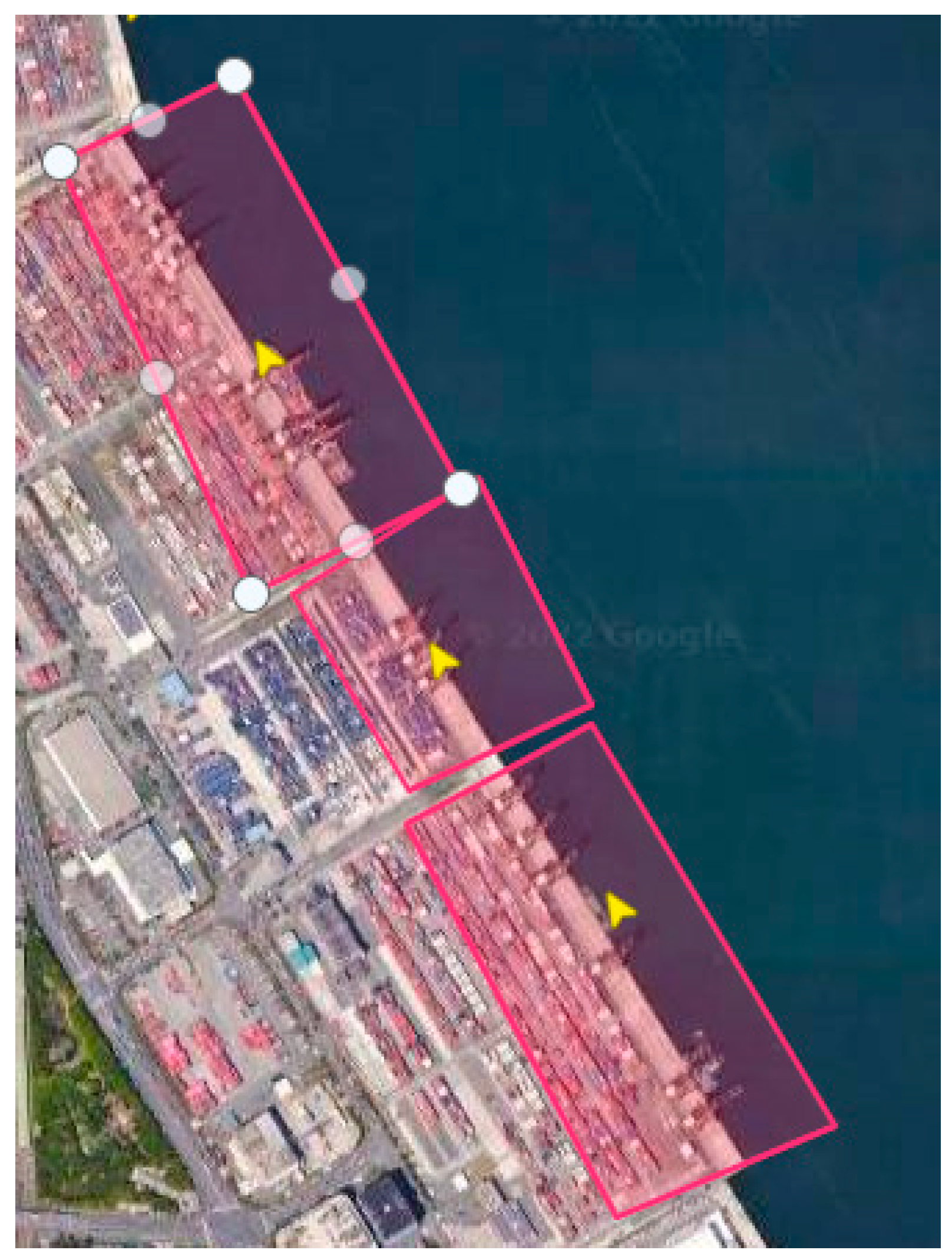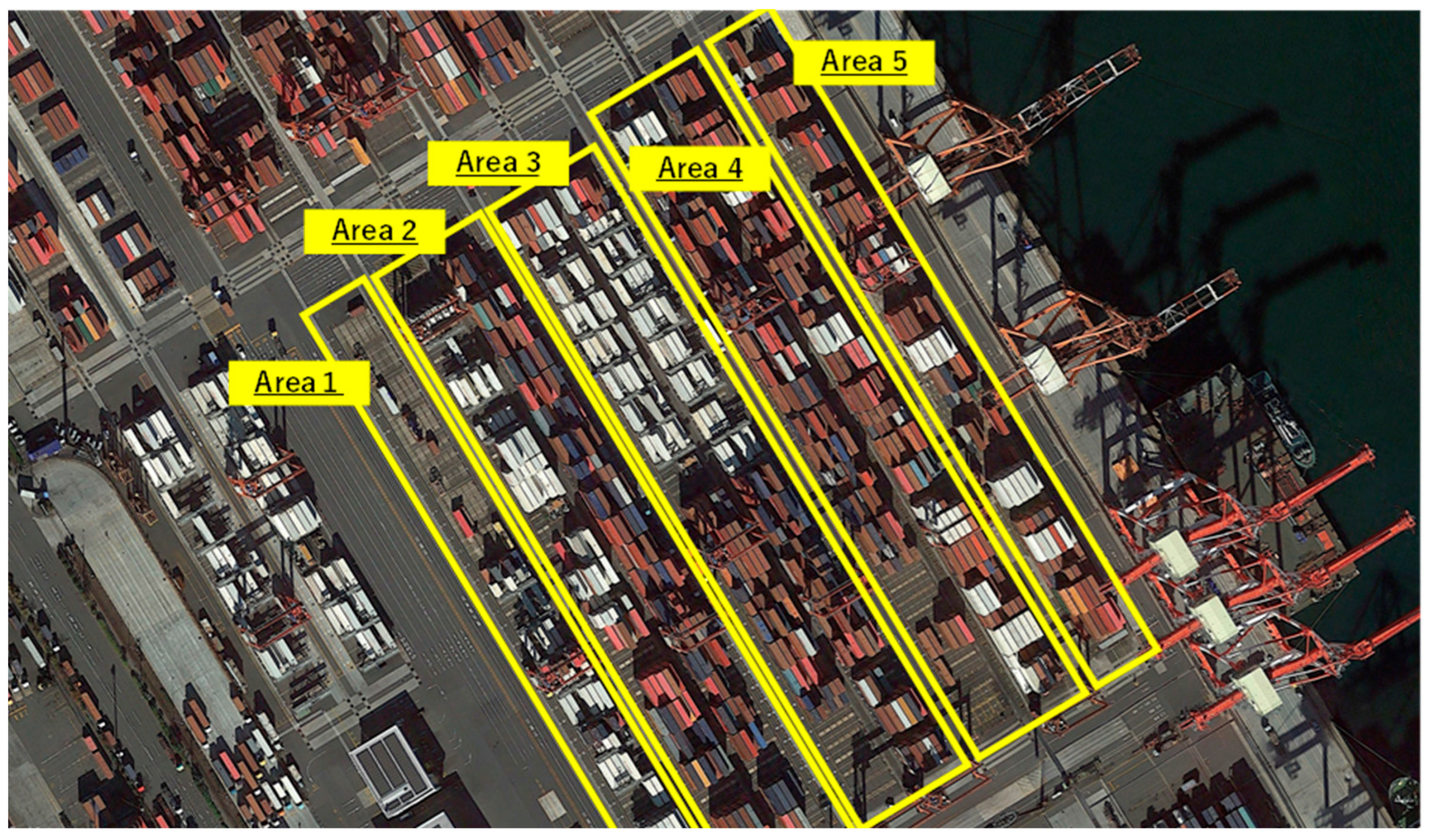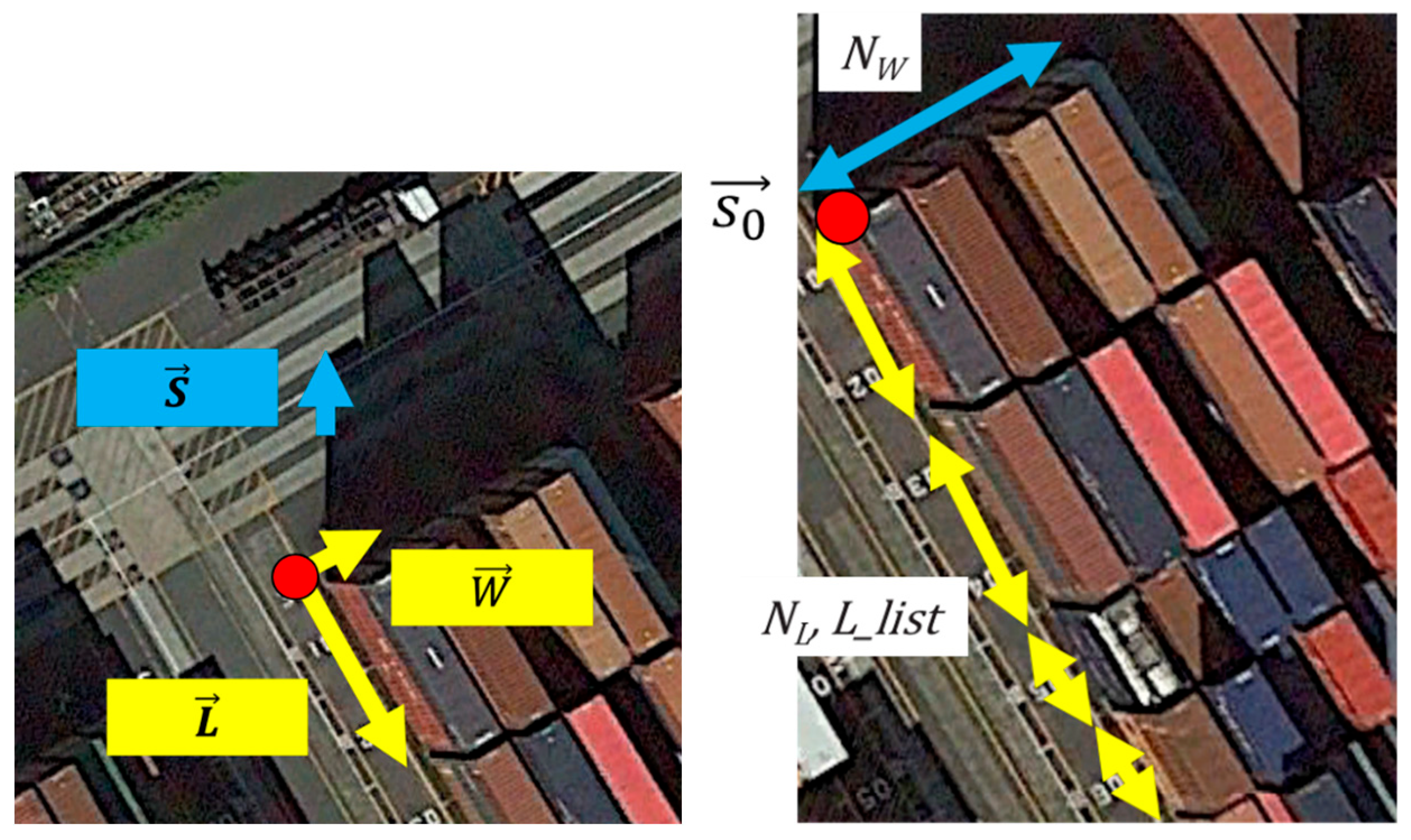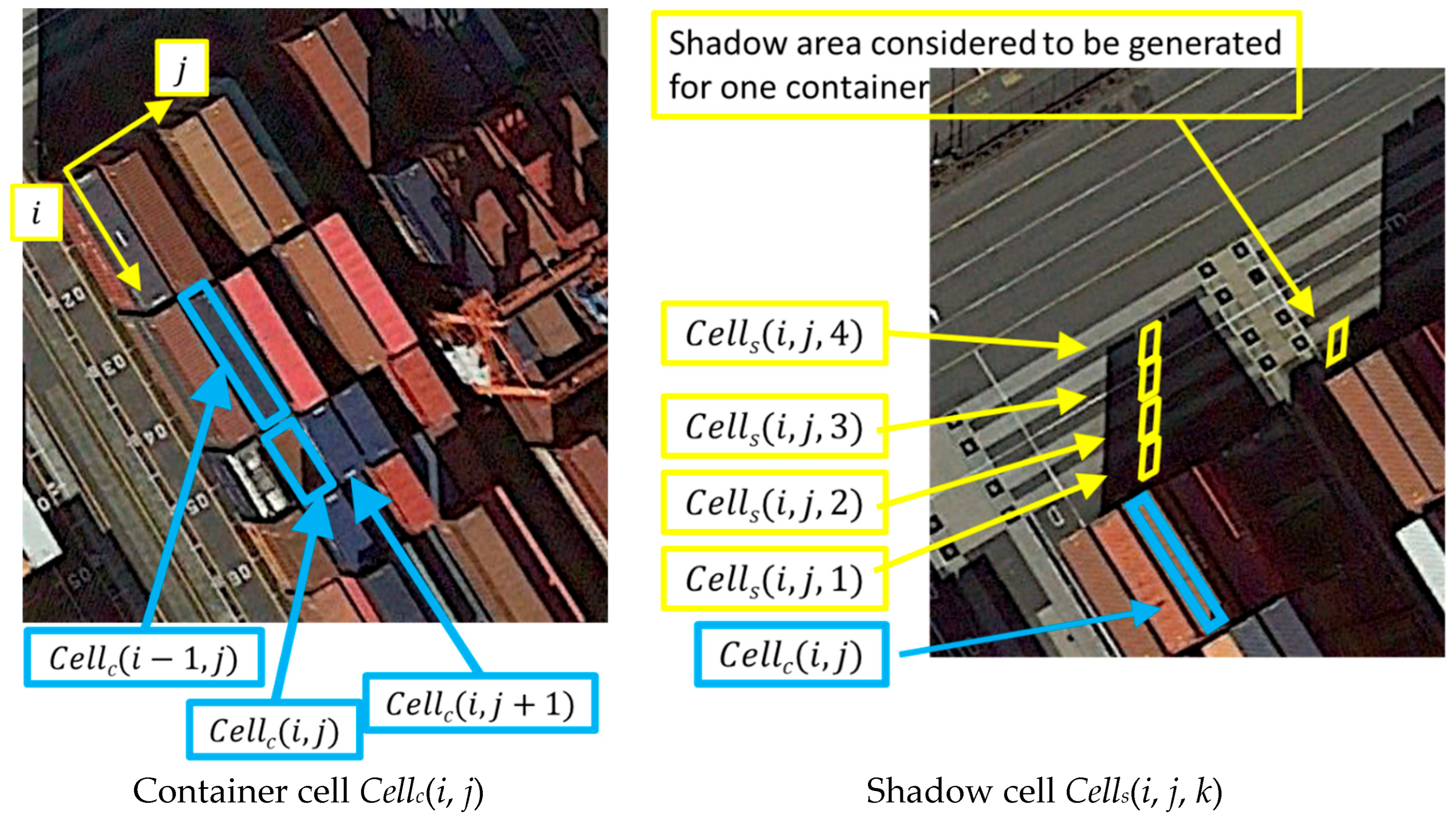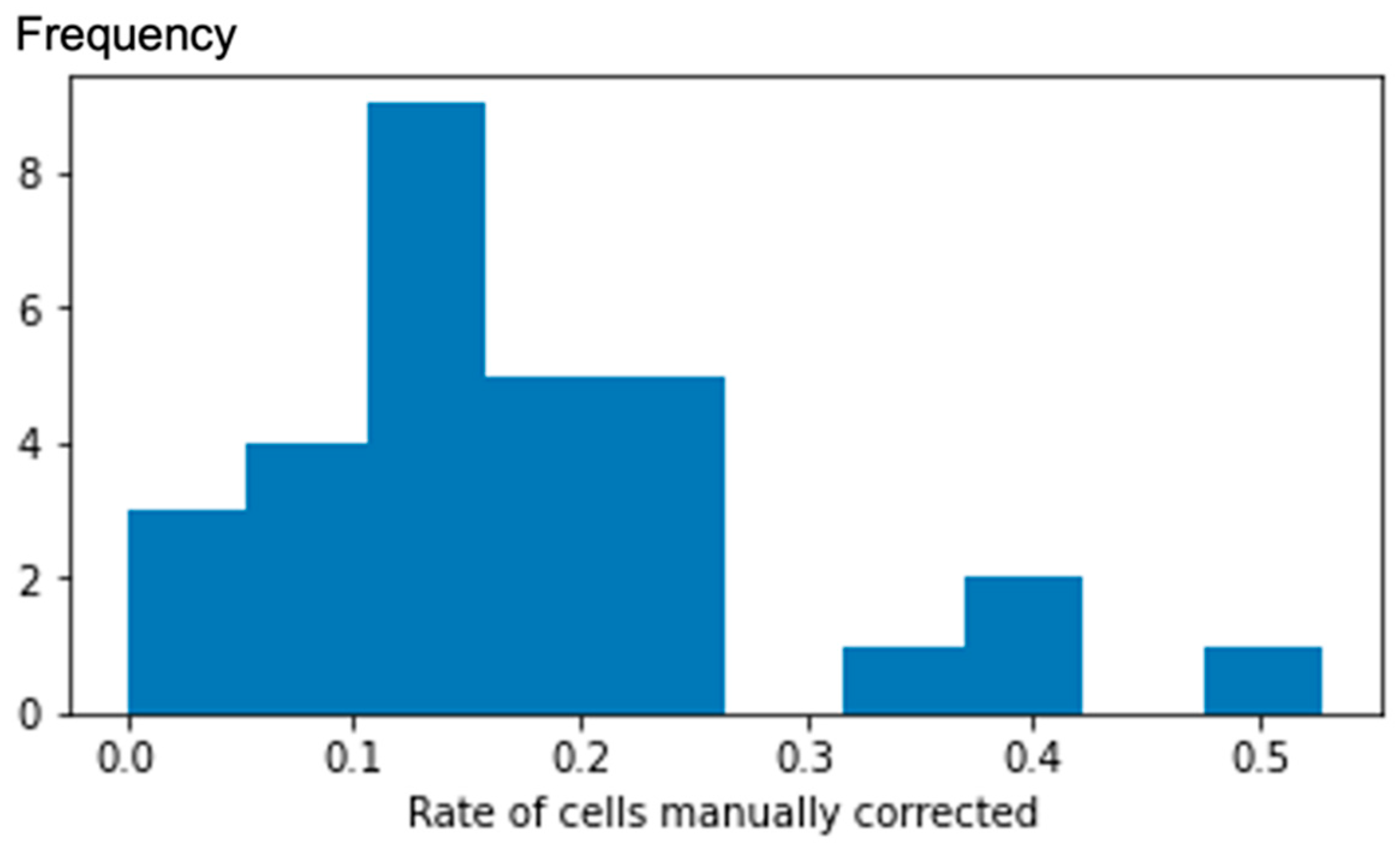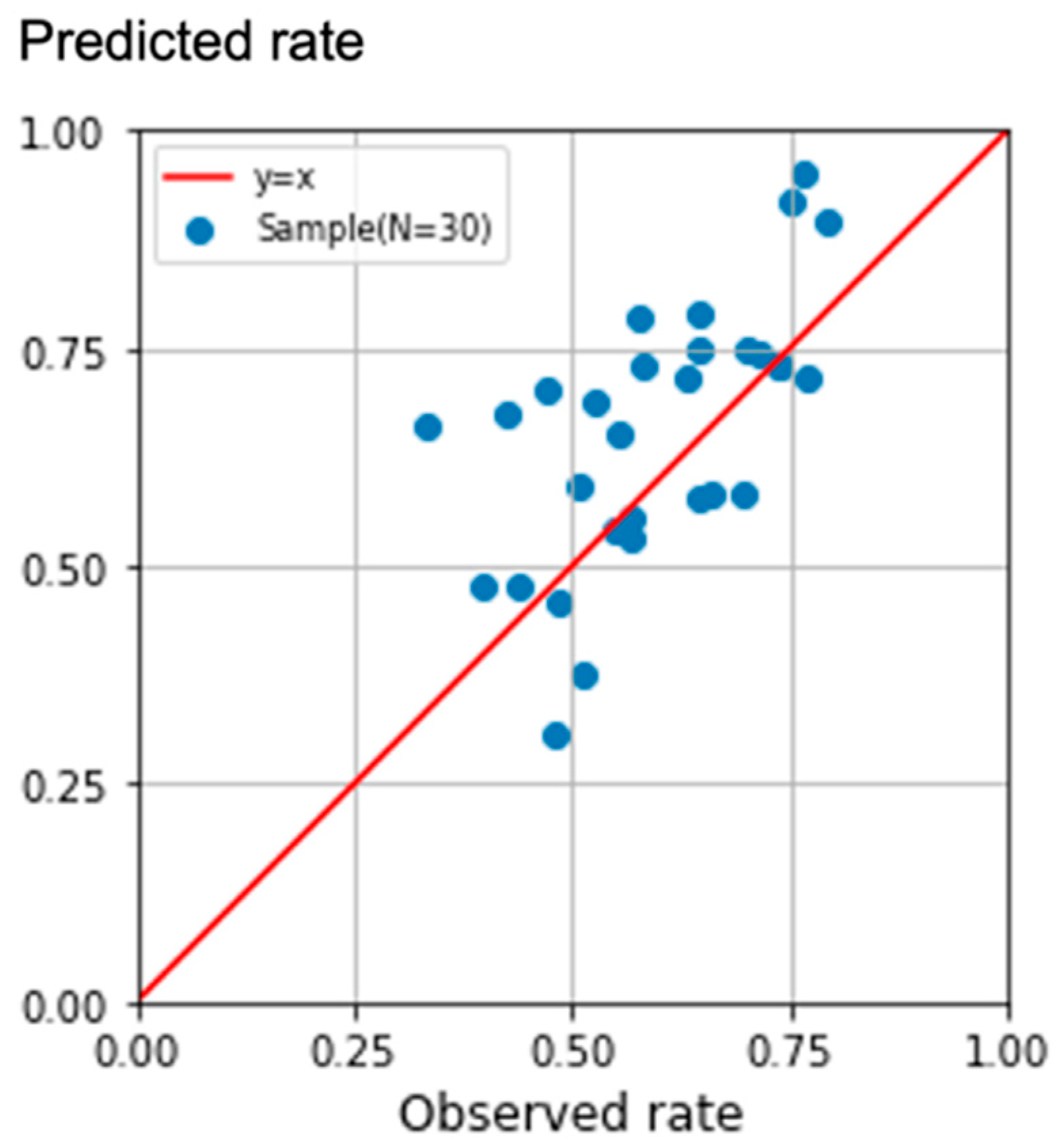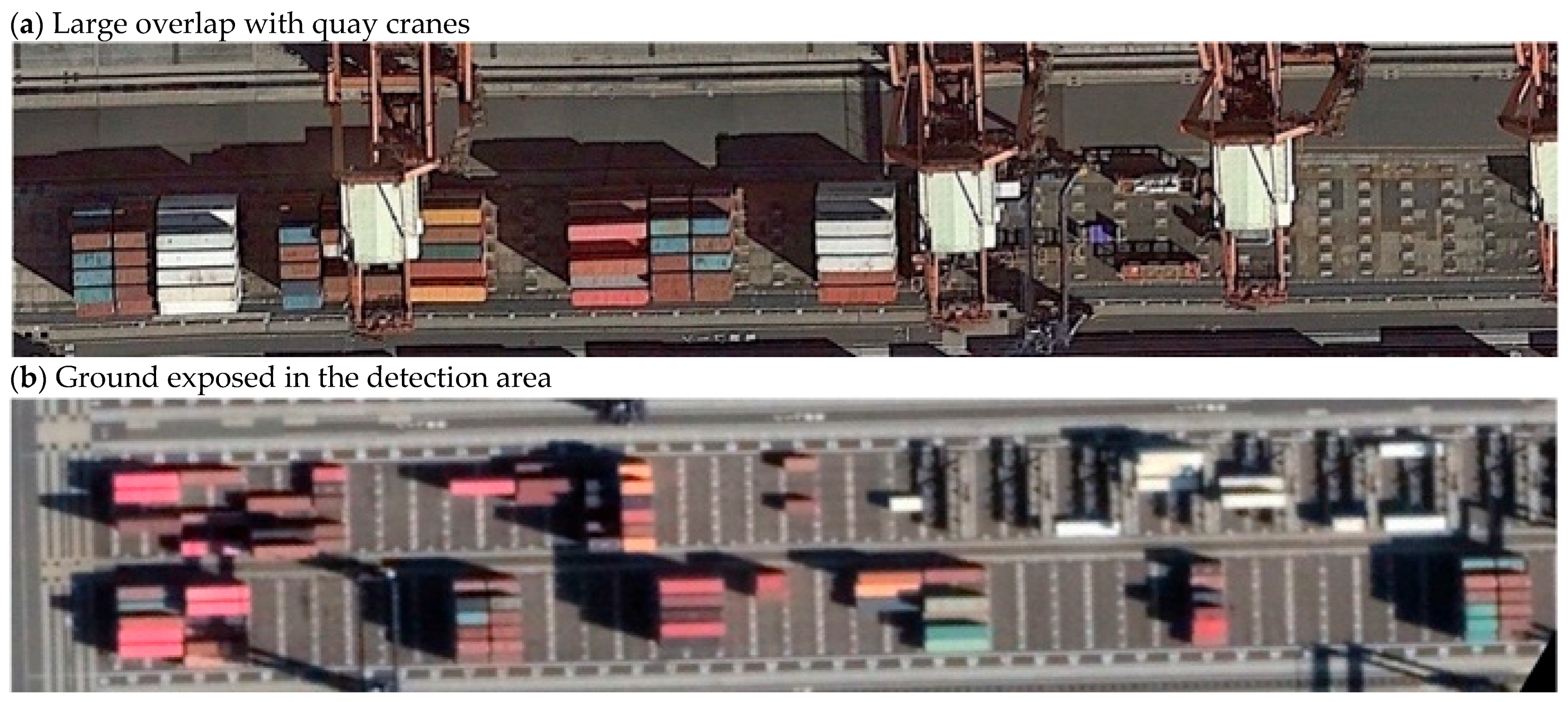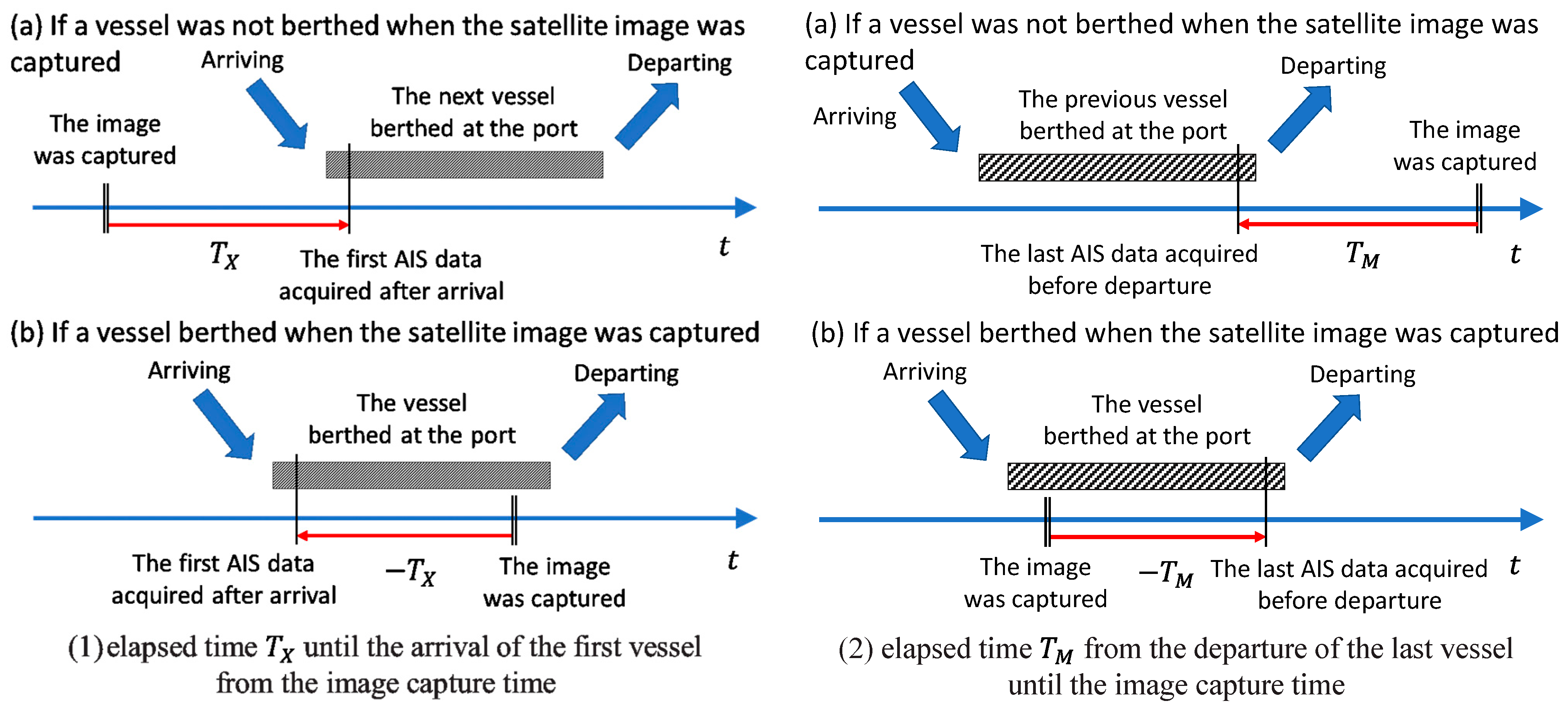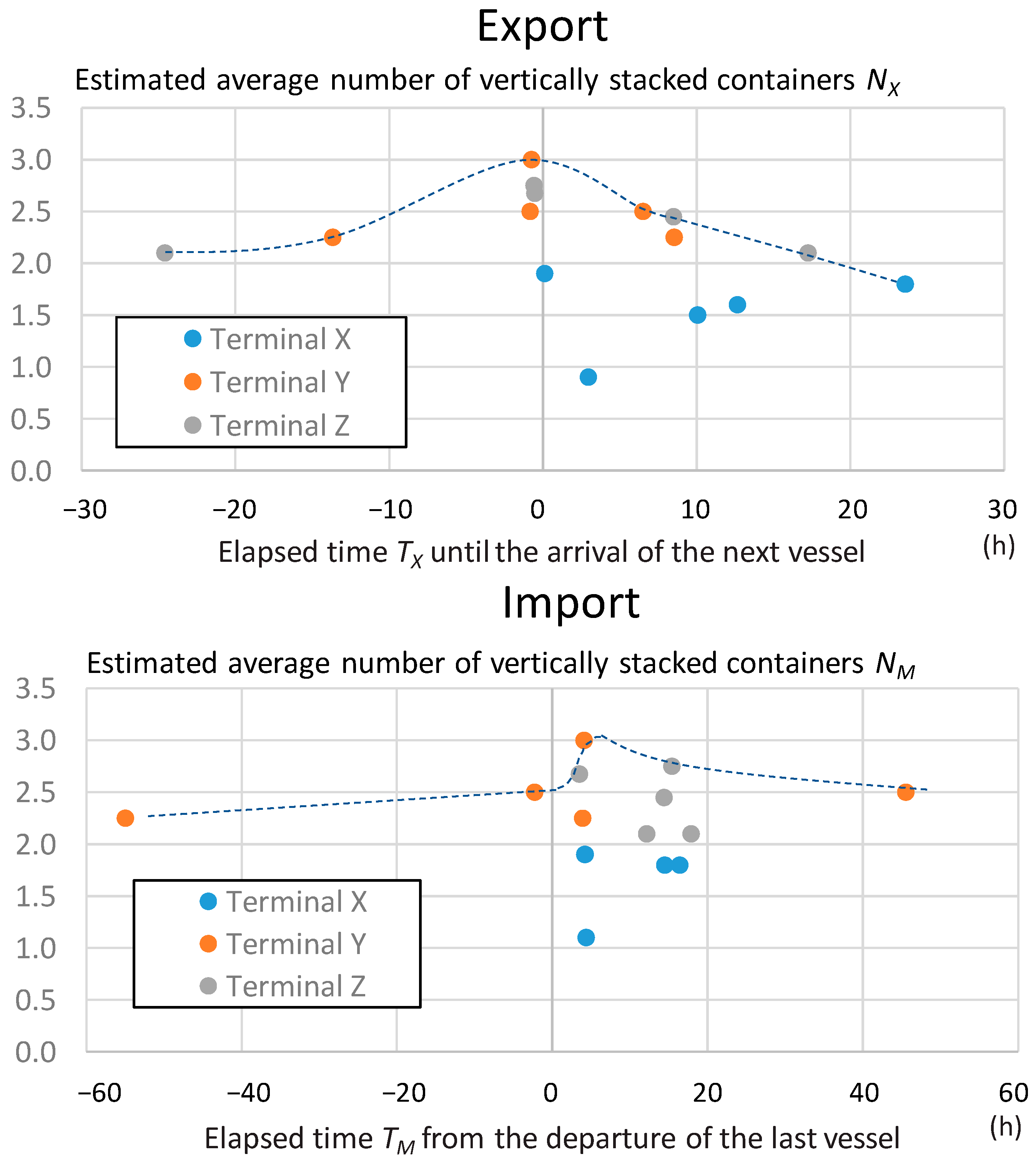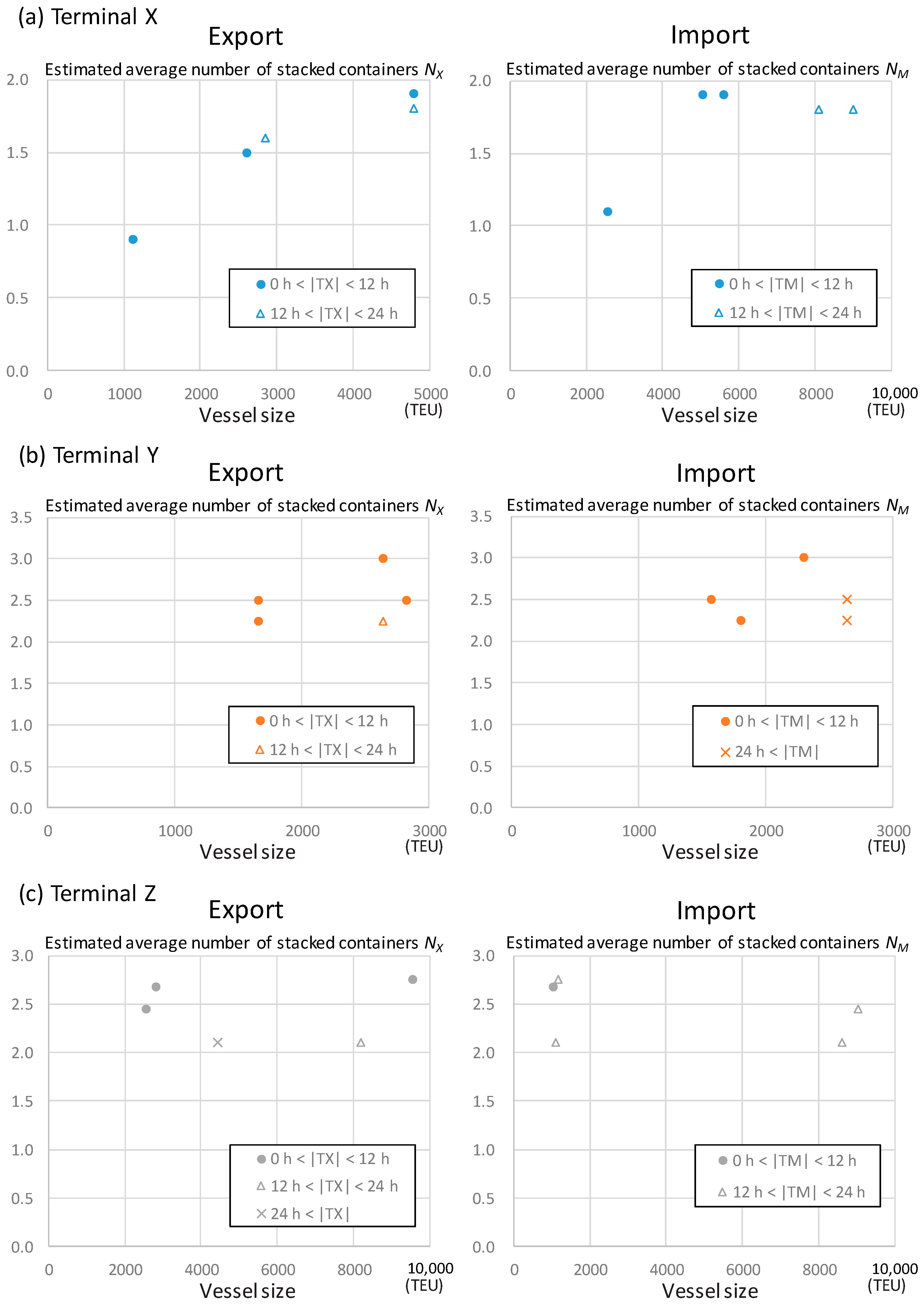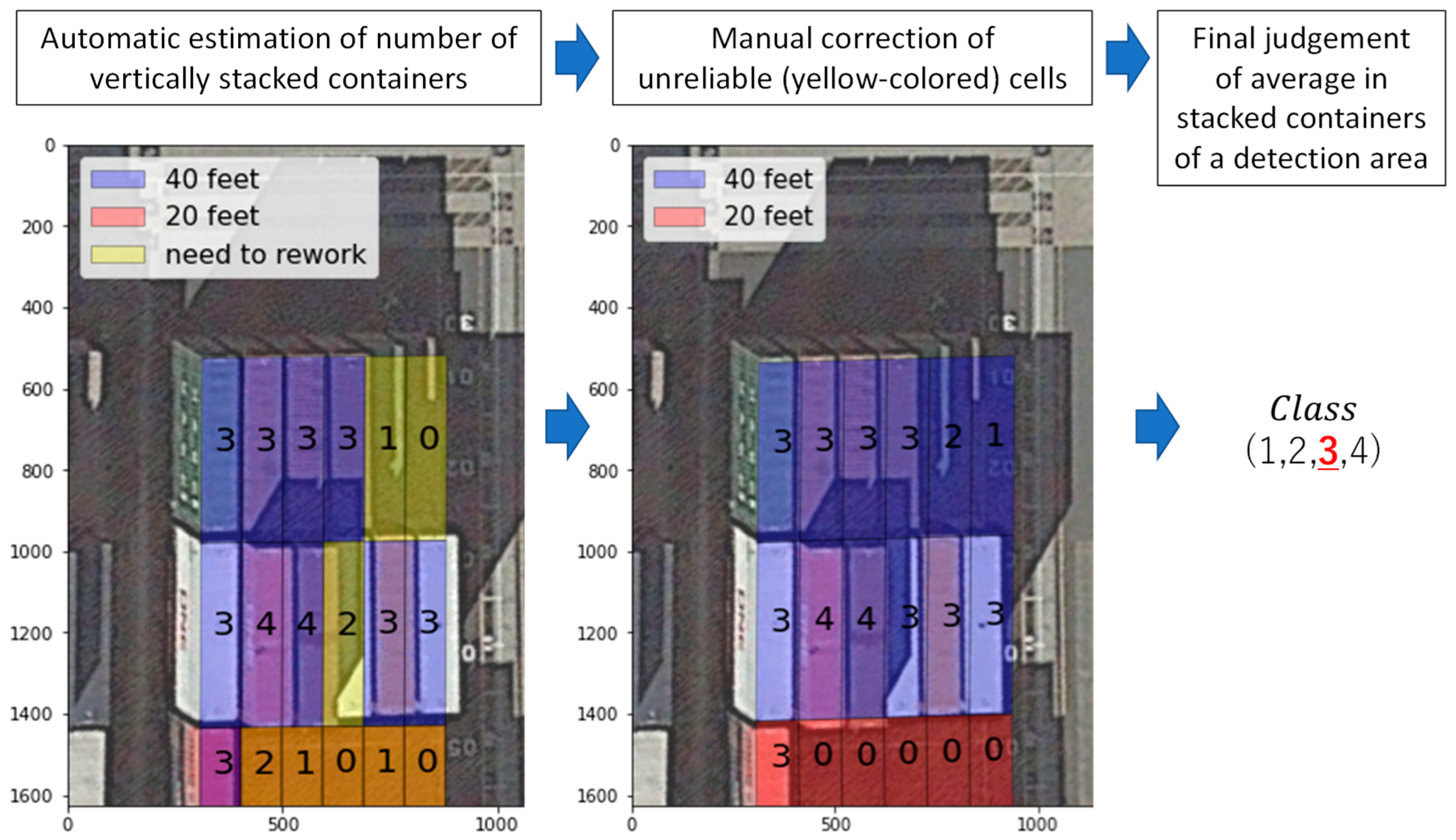1. Introduction
With the increasing global competition in the port industry, improving container port efficiency has become a critical issue in recent years. The operational efficiency at each port and terminal is significant for determining which ports the shipping companies will use. Efficient operation is also necessary from an environmental perspective as it will reduce the time each vessel is in port; thus, the port industry can engage in sustainable economic development by saving fuel and reducing emissions. Many factors influence port efficiency, including the availability of quay and dock facilities, quality of connections to road and rail services and their competitiveness, and total number of cranes and berth use at each port. However, one challenge is the need for uniform criteria for evaluating efficiency among different ports. Accordingly, many studies have been conducted to address this need.
Big data have been widely used in the maritime industry. One example is the automatic identification system (AIS) in vessels [
1]. Since the late 2000s, the development of satellites and information technology has led to the expansion of AIS data and other information about vessel movements. Moreover, the number of businesses that have accumulated and used such data has increased. Several studies have used this data in logistics and maritime economics, as summarized by [
2,
3,
4,
5]. Moreover, satellite images have been recently expected to be useful in the maritime industry. Detecting vessels in satellite images is significant for ocean observations and disaster relief. It has also gained substantial attention from a maritime security perspective, such as in the detection and monitoring of poaching and maritime accidents involving vessels without an AIS. In addition, recent developments in deep learning and computational technologies have enabled real-time and high-speed large-scale image recognition, and resources for the quick image processing of vessels and ports have been made available. This has led to more deep learning research on vessel detection in images. However, owing to the lack of large datasets, most studies have focused on vessel detection in images rather than port terminals, and few studies have associated satellite images with AIS data.
To address these shortcomings, this study considers container yard congestion among the factors affecting port efficiency and contributes to the literature by first proposing a method for the dynamic assessment using satellite images and AIS data without statistical information. Specifically, this study aims to classify the congestion of container yards into several levels using a machine learning model. Container yard conditions change momently and are significantly influenced by the season, day of the week, time of day, and timing of vessel arrival and departure. Although counting the total number of containers in the yard from satellite images is a direct approach, it requires considerable time, especially for extracting the height information from stacked containers. Therefore, this study first develops an annotation tool to generate training data by focusing on the shadows generated by the containers. Subsequently, a convolutional neural network (CNN) is applied for the end-to-end analysis of yard congestion classification. Finally, AIS data are used to analyze the relationship between yard congestion and vessel arrival and departure times as an example of dynamic efficiency analysis of container terminals using satellite images.
Various statistics and field surveys are necessary to investigate container yard congestion for third parties who cannot obtain operational data directly from operators. However, considering the current availability of inexpensive satellite images captured with high frequency owing to the development of space technology [
6], this study aims to serve as a benchmark when satellite images are abundantly available. The remainder of this paper is organized as follows:
Section 2 summarizes the related literature and data used in this study and positions this paper;
Section 3 and
Section 4 describe an annotation tool and CNN model with their estimation results, respectively;
Section 5 analyzes the relationship between yard congestion and vessel arrival and departure timing; and finally,
Section 6 summarizes the conclusions of this paper.
5. Congestion Analysis with AIS Data
This section presents an example of the analysis of the relationship between the estimated container occupancy rate in a yard in the previous section (
Section 4) and vessel arrivals and departures using AIS data because the congestion level of container terminals is considered to fluctuate depending on the timing of arrival and departure of containerships. Generally, export containers stacked at a yard are maximized right before the vessel arrivals, while import containers stacked are maximized right after the vessel departures. This is because the handling time discharging from and loading onto a vessel (normally, it is a few hours to half a day) is sufficiently shorter than the duration time when all export and import containers are carried in from and out outside the terminal by trucks (a few days to more than one week).
Based on the AIS data of vessels arriving and departing from each terminal immediately before and after each image was captured, the average number of vertically stacked containers in all detection areas for each terminal (
NX for export and
NM for import containers), calculated from the output of the annotation tool, is compared with the elapsed time
TX (or
TM) until the arrival (from the departure) of the first (last) vessel after (before) image capture from (until) the time of image capture.
Figure 11 shows the definitions of the elapsed times
TX and
TM. Note that if a vessel was berthed at image capture, the elapsed time would be negative, as shown in the figure. Details about the estimation of the elapsed times from the AIS data are described in the
Appendix A.
NX and
NM are expected to be higher (the more containers are expected to remain in the yard) as the absolute values of
TX and
TM become smaller (the closer the time of image capture is to the vessel arrival or departure time).
One issue in this analysis is that the export and import containers cannot be differentiated using satellite images. Therefore, the yard layout and breakdowns of loaded, unloaded, and empty containers for each detection area are obtained from Terminal X. Notably, the timings of the numbers of loaded, unloaded, and empty containers obtained differ from the image capture times. Thus, the general rate of export and import containers (
rX(
a,
b) and
rM(
a,
b)) for each detection area
a of berth
b are estimated from the observed data at multiple time points, as shown in
Table 7 (note that most empty containers are exported from the port of Tokyo). Accordingly, the average numbers of vertically stacked export and import containers for each terminal,
NX and
NM, can be calculated as
where
z(
a,
b) is the congestion level of detection area
a of berth
b. Equation (5) assumes that each terminal similarly uses all detection areas wherever the containership berths in the terminal based on the current operation. For Terminals Y and Z, the same number of vertically stacked containers in all detection areas is assumed for export and import because the observed numbers of containers are not available for these terminals. The estimated average number of vertically stacked containers in Terminal X does not differ significantly between exports and imports, indicating that the estimation method for export and import containers in this study is inadequate.
First, by checking the coherence between the satellite images and AIS data, the satellite image data from one of the six days (as of 16 October 2018) used in the previous sections are eliminated from the following analyses because of the contradiction that no berthing vessels were found in the satellite image while the AIS indicated some vessel berthing, possibly due to inaccuracy of the image capture date.
Figure 12 shows the relationship between the estimated average number of vertically stacked containers (
NX or
NM) and the elapsed time of the arrival of the first vessel (
TX) or departure of the last vessel (
TM) at the three terminals for the other five days. The figure indicates a negative correlation between the maximum value of the average number of vertically stacked containers
NX (or
NM) and the absolute value of the elapsed time |
TX| (or |
TM|), represented by the envelope curve in the figure.
Although the above analysis focuses on the overall trends of the three terminals,
Figure 12 indicates that each terminal had different characteristics; for example, the number of vertically stacked containers in Terminal X was generally smaller than those in other terminals and not correlated with the elapsed time. In addition, it is generally known that more containers are loaded and discharged onto/from the larger vessels. Therefore, the relationships between the average numbers of vertically stacked containers
NX and
NM and vessel size are investigated in
Figure 13 with the group of the absolute value of the elapsed time. The figure indicates that in Terminals X and Y, the average number of vertically stacked containers
NX (or
NM) in the same elapsed time group was larger if the vessel size was larger. In addition, the average number of vertically stacked containers
NX (or
NM) was smaller in these terminals if the absolute value of the elapsed time |
TX| (or |
TM|) was larger. However, these findings were not observed in Terminal Z.
Considering the results shown in both
Figure 12 and
Figure 13, the average number of vertically stacked containers correlated more with the elapsed time than with the vessel size in Terminals Y and Z, although the sample size was insufficient. By contrast, it was correlated more with the vessel size than with the elapsed time in Terminal X. One possible explanation is that the difference in vessel size could be observed more clearly in Terminal X because the average number of vertically stacked containers
NX (or
NM) was relatively smaller (i.e., the terminal is not congested). By contrast, the changes in the number of vertically stacked containers were more dynamic in Terminals Y and Z because the more severe time management of yard operation was necessary due to much congestion.
In conclusion, as an example of dynamic efficiency analysis of container terminals, the relationship between the estimated average number of vertically stacked containers and the elapsed time between image capture and vessel arrival or departure acquired from the AIS data is investigated in this section. A negative correlation is observed between the maximum value of the estimated average number of vertically stacked containers and the absolute value of each elapsed time, although the number of samples used in the analysis is insufficient. More specifically, because more severe time management of yard operation is necessary for congested terminals, the closer the image capture time to the vessel arrival or departure time, the greater the container occupancy rate of the terminal. However, in the uncongested terminal, the average number of vertically stacked export and import containers increases if the vessel size increases because more containers are loaded and discharged onto/from the larger vessels. Since these discussions are based on a very limited number of samples, increasing the sample size and timeliness are significant issues. In addition, all satellite images were captured at the same time (9:00 AM), as shown in
Table 1; thus, the variation of time is necessary for further analysis because many vessels arrived early morning (right before the time when the satellite image was captured) and left midnight (several hours before the time when the satellite image was captured), as can be observed from
Figure 12, although these terminals operated throughout the day in principle.
6. Conclusions
This study proposed a method to dynamically estimate container occupancy rate in container yards and classify their congestion level using satellite images by developing an annotation tool to reduce the workload of creating the training data and end-to-end classification model using machine learning. The relationship between the congestion level and elapsed time until vessel arrival (or from vessel departure) was examined using AIS data as an example of dynamic efficiency analysis of container terminals using satellite images.
This study proposed a prototype for dynamically estimating the number of vertically stacked containers and congestion level of container terminals using satellite images without statistical information, as well as examining the relationship between the congestion level and timing of vessel arrival by combining with AIS data. The proposed method can contribute to dynamic operational analyses in container terminals, which is particularly beneficial for third parties who cannot obtain operational data directly from operators to understand and compare the overall efficiency of terminal operations. While this study aims to serve as a benchmark if satellite images with high resolution become abundantly available, Google Earth images used in this study are not updated in real time, making them unsuitable for monitoring daily status changes. However, 30 cm high-resolution and higher revisit satellite constellations are planned to be built in the near future [
6]; therefore, if images with spatial resolution nearly comparable to Google Earth images are available with high frequency, real-time monitoring of container terminals and measuring operation efficiency by third parties would be realized. It can also be used to analyze container cargo flows and congestion on land, such as trucks, railways, inland depots, and warehouses, where comprehensive information about real-time movement of transport means, such as an AIS, is unavailable for third parties. In addition, the findings regarding the relationships among the yard congestion level, its fluctuation by time, and vessel size will improve understanding of the essence of container yard operation.
However, some issues require additional investigation. First, the proposed annotation tool could be improved further. For example, although this study evaluated the accuracy of the tool by comparing it with the number of containers counted visually, it should be better evaluated with observed data acquired from the terminals to ensure objectivity. More advanced techniques for developing annotation tools, such as ensemble learning and active learning (or optimal experimental design), which combine multiple learning processes and automatically decide the direction of learning, can also be introduced. Moreover, semantic segmentation can be applied to differentiate pixels with cranes or those without containers (i.e., the ground area and driving path in the terminal) from vertically stacked containers to reduce misclassified images. Validation of some criteria used in the tool is also necessary.
Increasing the sample size and timeliness are also significant issues, as discussed above. If the development of satellite technology enables satellite image acquisition at a lower cost and with higher frequency, more sophisticated models and analyses will become possible. SAR images can also improve the precision of the analysis. More detailed analyses of the relationship between yard congestion and vessel arrival or departure are also necessary by increasing the sample size. By incorporating the dataset representing various situations of container terminals, we can conduct the dynamic and real-time assessment of port operation efficiencies, including comparative analysis with the current static assessment using statistics.
Other methods of measuring the operational efficiency of container terminals using satellite images are also possible, such as observing the operation of quay cranes using vessel berthing information from the AIS. Another example is detecting the length of truck queues outside the gates of container yards because yard congestion causes many problems outside, including truck congestion. Future works should focus on detecting yard congestion at its propagation destination and analyzing its relationship with yard congestion.
